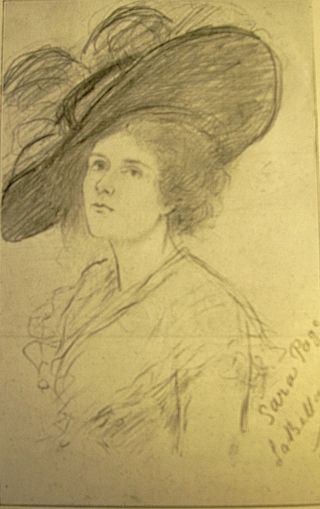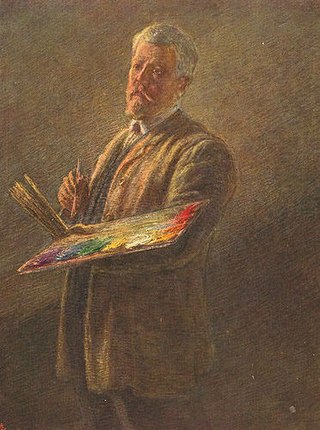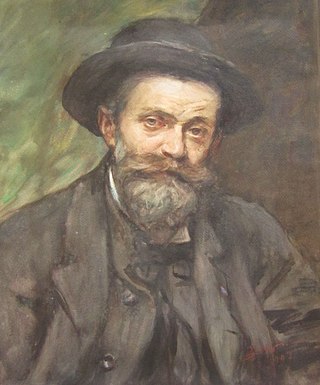Related Research Articles

The photophone is a telecommunications device that allows transmission of speech on a beam of light. It was invented jointly by Alexander Graham Bell and his assistant Charles Sumner Tainter on February 19, 1880, at Bell's laboratory at 1325 L Street in Washington, D.C. Both were later to become full associates in the Volta Laboratory Association, created and financed by Bell.

Jules Bastien-Lepage was a French painter closely associated with the beginning of naturalism, an artistic style that emerged from the later phase of the Realist movement.

Paul Peel was a Canadian figure painter. Having won a medal at the 1890 Paris Salon, he became one of the first Canadian artists to receive international recognition in his lifetime.

Edward John May (1853–1941) was an English architect.
Frank Paton was an English artist of the Victorian and Edwardian eras, best known for his paintings of animals and scenes of rural life. He was a successful artist during his lifetime and could even count Queen Victoria as an admirer of his work. His most famous compositions, "Fairest of Them All" and "Puss in Boots" (1880), still sell as collectibles today in various forms, including canvas, posters and plates. His series of printed Christmas cards published between 1880 and 1909 have also become collectibles.

Léon François Comerre was a French academic painter, famous for his portraits of beautiful women and Oriental themes.

Sara Wells Page (1855–1943) was a British artist, portrait and figurative painter, of the Victorian and Edwardian period. During her lifetime she was widely exhibited at Parisian salons and British galleries, including the Royal Academy of Arts. Three of her paintings are in Wolverhampton Art Gallery.

Francesco Mancini was an Italian painter.

Gaetano Previati (1852–1920) was an Italian Symbolist painter in the Divisionist style.
Valerico Laccetti or Valerio Laccetti was an Italian painter, mainly of pastoral genre themes.
Giovanni Lavezzari (1817–1881) was an Italian painter.
Ambrogio Preda was an Italian painter, mainly of landscapes of the alpine mountains and valleys.
Augusto Sezanne was an Italian painter, active in a Naturalist style of landscape painting. He also worked as engraver, ceramist, and even as architect.

Antonio Zona was an Italian painter, active in a style fusing Neoclassicism and Romantic style.

Alessandro Zezzos was an Italian painter of genre scenes, costume scenes, portraits, and vedute, in watercolors and oils.

Giuseppe Mazza was an Italian painter active in a Romantic style.
Luigi Rosa was an Italian painter, mainly of vedute of his native lagoon.

Camillo Miola, also known as Biacca, was an Italian painter, often painting exotic Neo-Pompeian and Orientalist subjects. He also painted history and portraits.
Giuseppe Modorati (1827–1923) was an Italian painter.
Francesco Autoriello was an Italian painter, mainly depicting historical canvases.
References
- ↑ Rivista della ortoflorofrutticoltura italiana, 1878, page 166.
- ↑ Dizionario degli Artisti Italiani Viventi: pittori, scultori, e Architetti, by Angelo de Gubernatis. Tipe dei Successori Le Monnier, 1889, page 254.
- ↑ Royal Academy Contributors page 365.